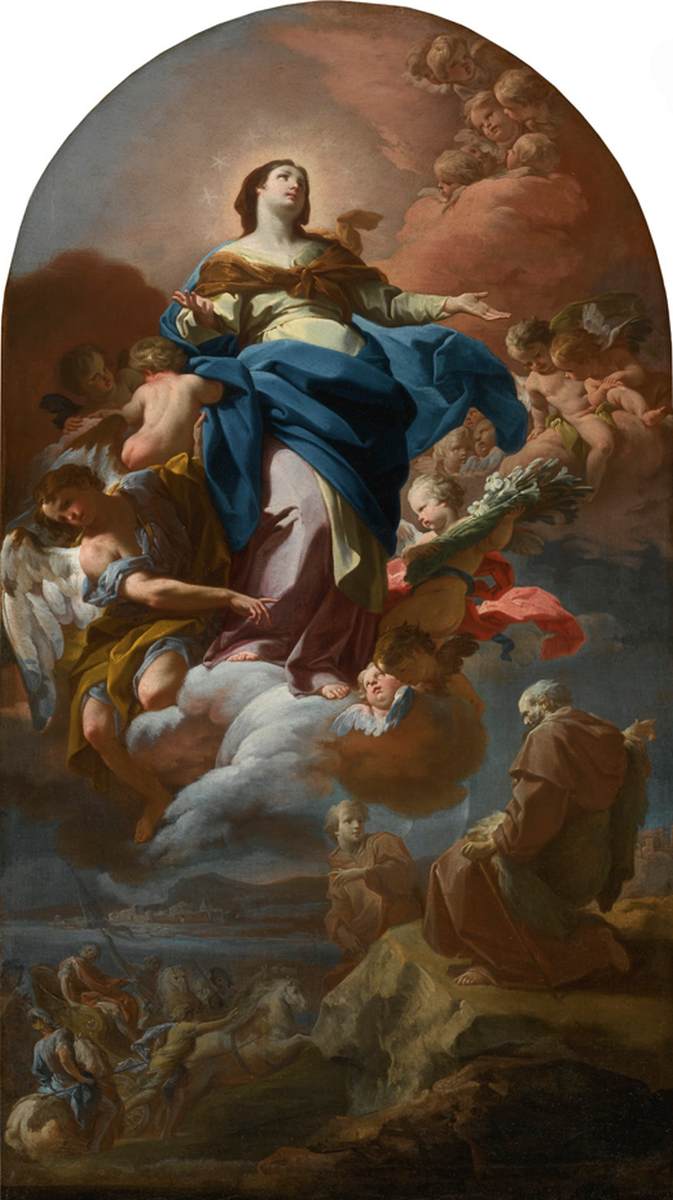Description
The painting Immaculate Conception with the Prophet Elijah by the Italian artist Corrado Giaquinto is a masterpiece of 18th century Baroque art. The composition of the painting is impressive, with the Virgin Mary in the center, surrounded by angels and the prophet Elijah. The image of the Virgin Mary is especially remarkable, as it is represented with great beauty and elegance, with a serene expression and majestic posture.
Giaquinto's artistic style is highly distinctive, with a focus on beauty and elegance in the depiction of his figures. The painting is full of details and decorative elements, such as the curtains and the ornaments on the characters' clothing. The coloring of the painting is vibrant and full of life, with warm and bright tones that make the image very attractive.
The history of the painting is also fascinating, as it was commissioned by King Carlos III of Spain for the chapel of the Royal Palace in Madrid. The work was made by Giaquinto during his stay in Spain, where he became one of the most important artists of the royal court. The painting has been the subject of numerous restorations and has been exhibited in several important museums, such as the Prado Museum in Madrid.
Although the painting is widely known and appreciated, there are some lesser-known aspects that are interesting to highlight. For example, the figure of the prophet Elijah in the painting is unusual in that it is not normally depicted in scenes of the Immaculate Conception. In addition, the painting was the subject of controversy in its time due to the representation of the Virgin Mary with a more sensual and voluptuous figure than was common in religious art of the time.
In summary, Immaculate Conception with the Prophet Elijah is a masterpiece of Italian Baroque art, which stands out for its beauty, elegance and colour. The painting is an example of Giaquinto's distinctive artistic style and has been the subject of numerous restorations and exhibitions in major museums. Its history and lesser-known aspects make the work even more fascinating and worthy of admiration.

